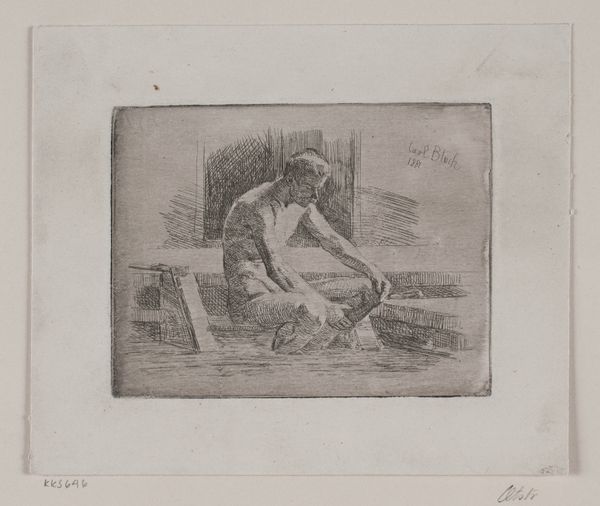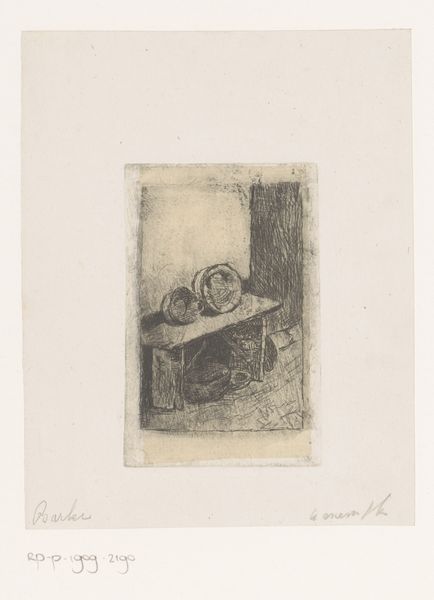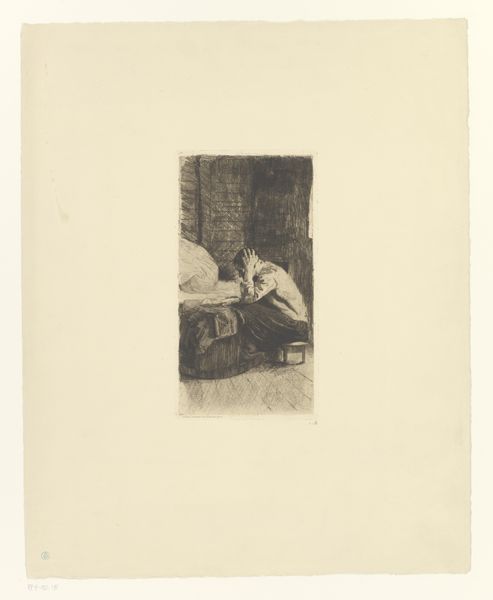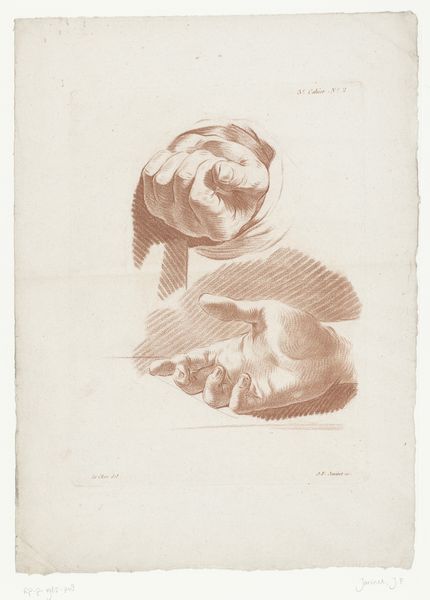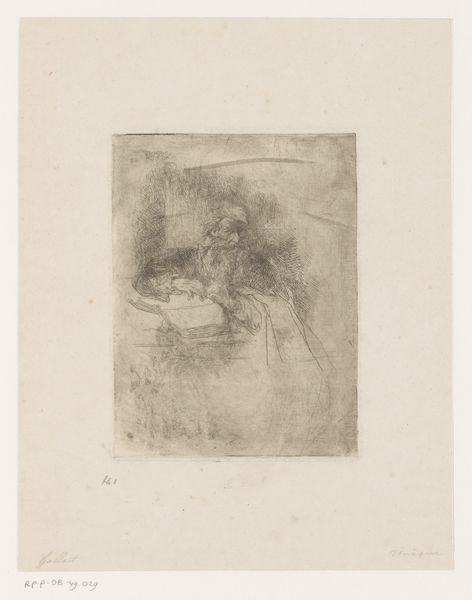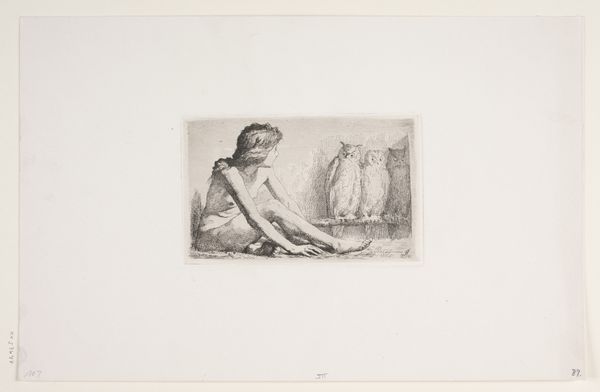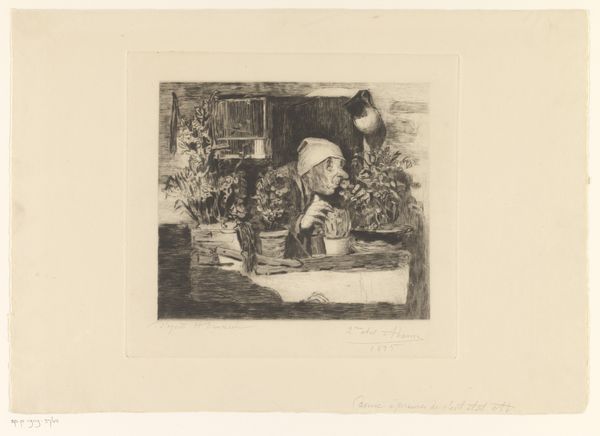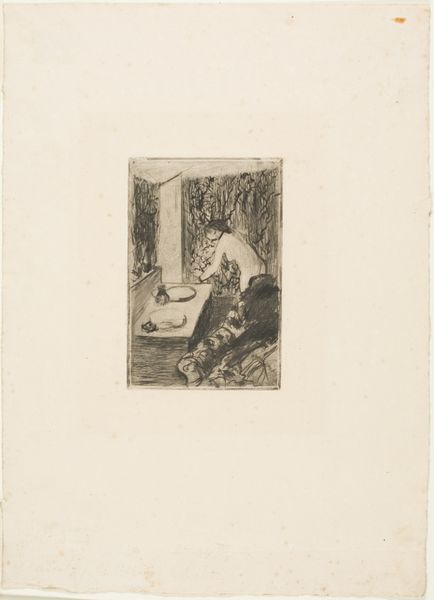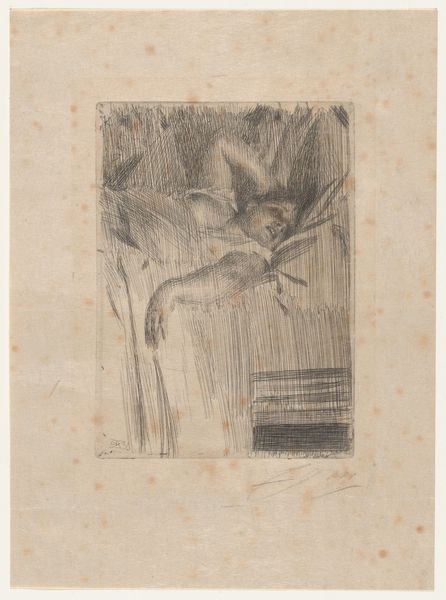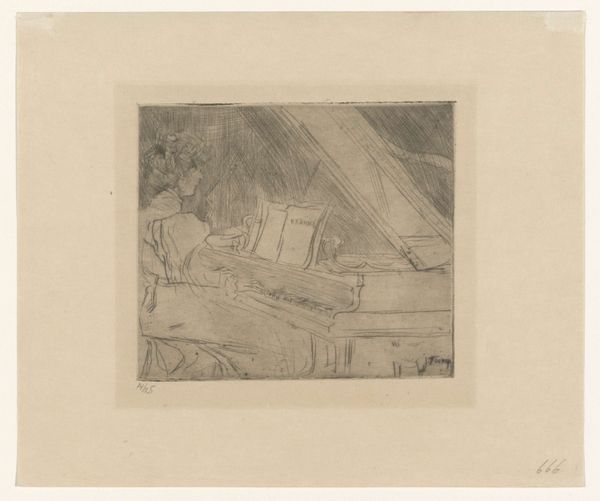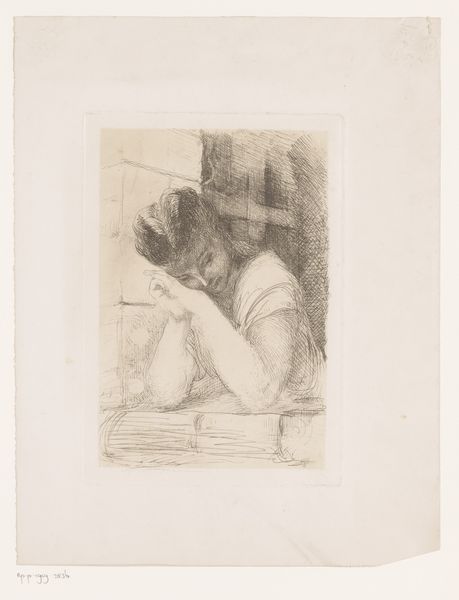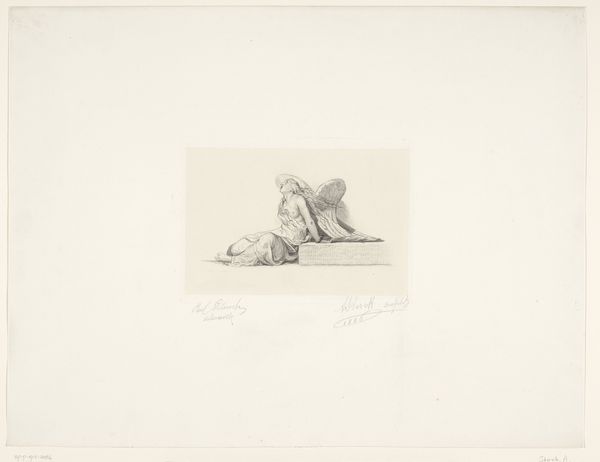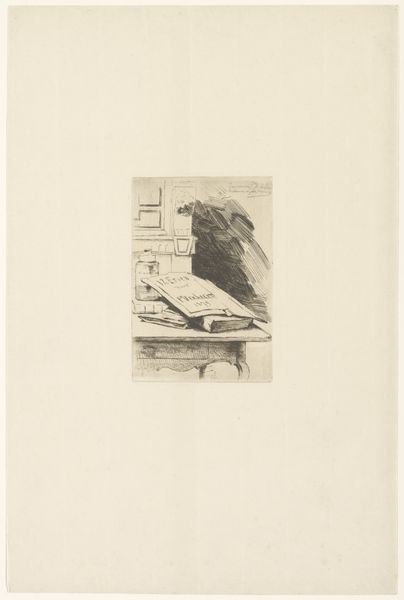
drawing, etching, paper, ink, pencil
#
portrait
#
pencil drawn
#
drawing
#
etching
#
pencil sketch
#
paper
#
ink
#
pencil drawing
#
pencil
#
realism
Dimensions: height 193 mm, width 140 mm
Copyright: Rijks Museum: Open Domain
Auguste Danse made this study of two hands on a table with etching around 1877. We see hands, caught in a moment of work or perhaps instruction, set against the backdrop of what appears to be a simple wooden table. Made in Belgium, this piece exists within a broader 19th-century European context where Realism and depictions of everyday life gained prominence. Think about the rise of industrialization and changing social structures. How did they lead artists to focus on representing the lives of ordinary people? Danse’s choice to depict hands – tools of labor and creativity – suggests an interest in the working class, but also perhaps the importance of craft in fine art. What is the artist telling us about the relationship of labour to art? To understand this piece fully, we might research Belgian social history during this period, looking at the role of artistic institutions and the representation of labor in art. By situating the artwork within its historical context, we can begin to unravel its deeper meanings and significance.
Comments
No comments
Be the first to comment and join the conversation on the ultimate creative platform.
